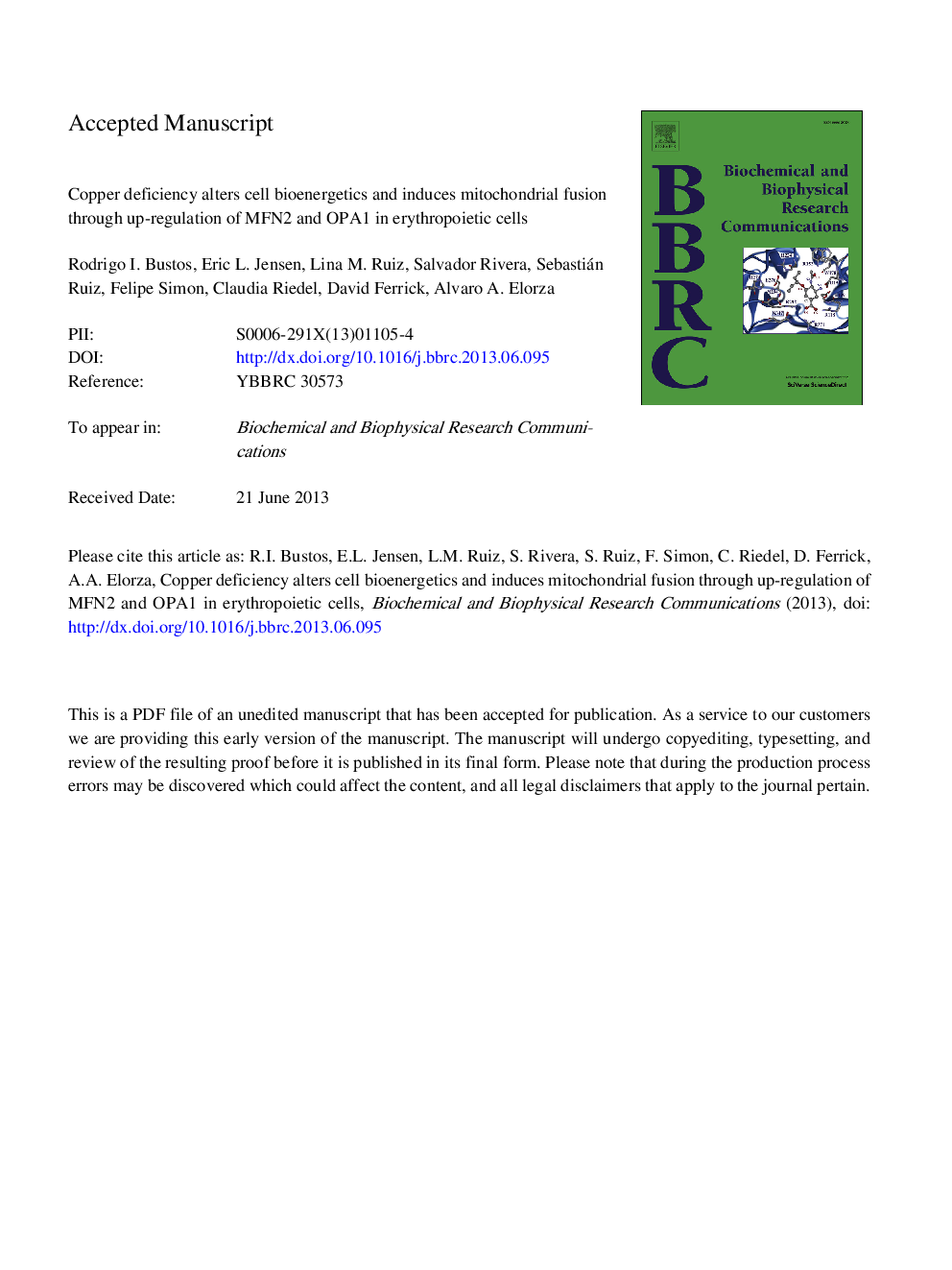| Article ID | Journal | Published Year | Pages | File Type |
|---|---|---|---|---|
| 10758917 | Biochemical and Biophysical Research Communications | 2013 | 23 Pages |
Abstract
Copper is essential in cell physiology, participating in numerous enzyme reactions. In mitochondria, copper is a cofactor for respiratory complex IV, the cytochrome c oxidase. Low copper content is associated with anemia and the appearance of enlarged mitochondria in erythropoietic cells. These findings suggest a connection between copper metabolism and bioenergetics, mitochondrial dynamics and erythropoiesis, which has not been explored so far. Here, we describe that bathocuproine disulfonate-induced copper deficiency does not alter erythropoietic cell proliferation nor induce apoptosis. However it does impair erythroid differentiation, which is associated with a metabolic switch between the two main energy-generating pathways. That is, from mitochondrial function to glycolysis. Switching off mitochondria implies a reduction in oxygen consumption and ROS generation along with an increase in mitochondrial membrane potential. Mitochondrial fusion proteins MFN2 and OPA1 were up-regulated along with the ability of mitochondria to fuse. Morphometric analysis of mitochondria did not show changes in total mitochondrial biomass but rather bigger mitochondria because of increased fusion. Similar results were also obtained with human CD34+, which were induced to differentiate into red blood cells. In all, we have shown that adequate copper levels are important for maintaining proper mitochondrial function and for erythroid differentiation where the energy metabolic switch plus the up-regulation of fusion proteins define an adaptive response to copper deprivation to keep cells alive.
Related Topics
Life Sciences
Biochemistry, Genetics and Molecular Biology
Biochemistry
Authors
Rodrigo I. Bustos, Erik L. Jensen, Lina M. Ruiz, Salvador Rivera, Sebastián Ruiz, Felipe Simon, Claudia Riedel, David Ferrick, Alvaro A. Elorza,
